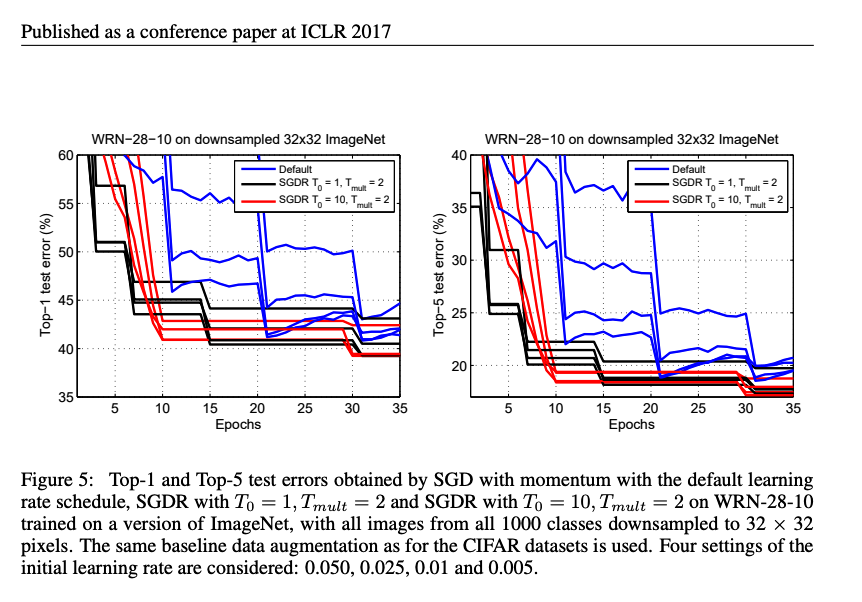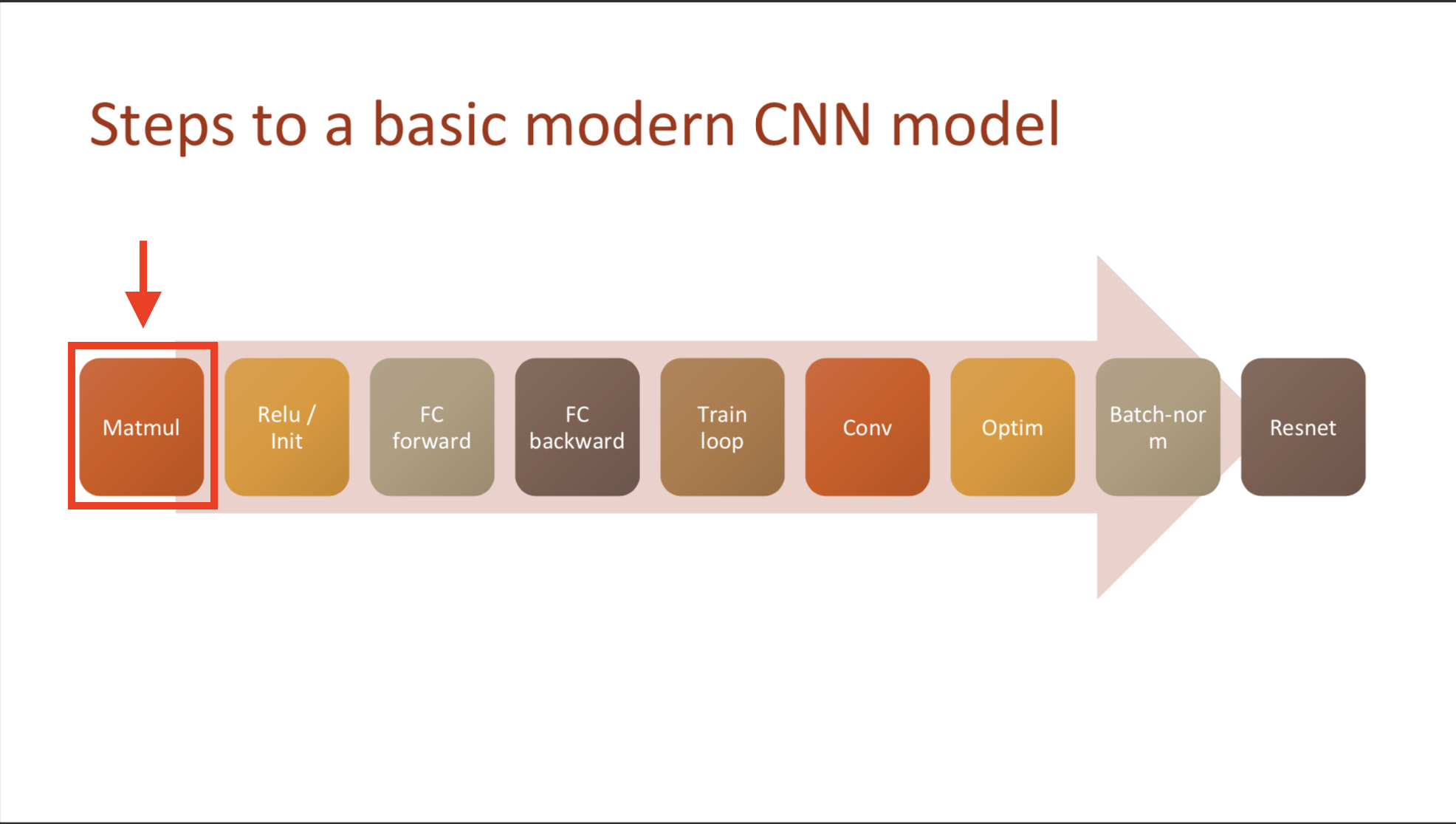Image reference: https://arxiv.org/pdf/1608.03983v5.pdf
🎮 Q0: Preprare data, dataset, databunch, learner, and run objects.
🎮 Q1: implement two new callbacks
1) Recorder: records scheduled learning rate & plot
- hint. consider which points you should intercept to record learning rate and loss
2) ParamScheduler: schedule any hyperparameter (as long as it’s registered in the state_dict of optimizer)
- hint. think of when you can apply tweaked hyper parameters
🎮 Q2: implement annealer which does schedule learning rate given specific period of training.
- Linear, Cosine, Exponential
🎮 Q3: plot above annealers start from 2 end with 0.01 (you’d need monkey patch code)
- (1) plot image on seperate images
- (2) plot graphs on one image 🎮 Q4: implement combine scheduler which re-scales schedulers with assigned percentaghes.
A0
A1
class Recorder(Callback):
def begin_fit(self): self.lrs,self.losses = [],[]
def after_batch(self):
if not self.in_train: return
self.lrs.append(self.opt.param_groups[-1]['lr'])
self.losses.append(self.loss.detach().cpu())
def plot_lr (self): plt.plot(self.lrs)
def plot_loss(self): plt.plot(self.losses)
class ParamScheduler(Callback):
_order=1
def __init__(self, pname, sched_func): self.pname,self.sched_func = pname,sched_func
def set_param(self):
for pg in self.opt.param_groups:
pg[self.pname] = self.sched_func(self.n_epochs/self.epochs)
def begin_batch(self):
if self.in_train: self.set_param()
A2
# annealer decorator
def annealer(f):
def _inner(start, end): return partial(f, start, end)
return _inner
# schedulers
@annealer
def sched_lin(start, end, pos): return start + pos*(end-start)
@annealer
def sched_cos(start, end, pos): return start + (1 + math.cos(math.pi*(1-pos))) * (end-start) / 2
@annealer
def sched_no(start, end, pos): return start
@annealer
def sched_exp(start, end, pos): return start * (end/start) ** pos
A3
annealings = "NO LINEAR COS EXP".split()
a = torch.arange(0, 100)
p = torch.linspace(0.01,1,100)
fns = [sched_no, sched_lin, sched_cos, sched_exp]
for fn, t in zip(fns, annealings):
f = fn(2, 1e-2)
plt.plot(a, [f(o) for o in p], label=t)
plt.legend();
A4
def combine_scheds(pcts, scheds):
assert sum(pcts) == 1.
pcts = tensor([0] + listify(pcts))
assert torch.all(pcts >= 0)
pcts = torch.cumsum(pcts, 0)
def _inner(pos):
idx = (pos >= pcts).nonzero().max()
if idx == 2: idx = 1
actual_pos = (pos-pcts[idx]) / (pcts[idx+1]-pcts[idx])
return scheds[idx](actual_pos)
return _inner
sched = combine_scheds([0.3, 0.7], [sched_cos(0.3, 0.6), sched_cos(0.6, 0.2)])
cbfs = [Recorder,
partial(AvgStatsCallback,accuracy),
partial(ParamScheduler, 'lr', sched)]
learn = create_learner(get_model_func(0.3), loss_func, data)
run = Runner(cb_funcs=cbfs)
Questions
Why this model has only one parameter bunch? (i.e. self.opt.params.group[-1] -> why picks up last element?)

 Sylvain Gugger at a joint NYC AI & ML x NYC PyTorch on 03/20/2019
Sylvain Gugger at a joint NYC AI & ML x NYC PyTorch on 03/20/2019